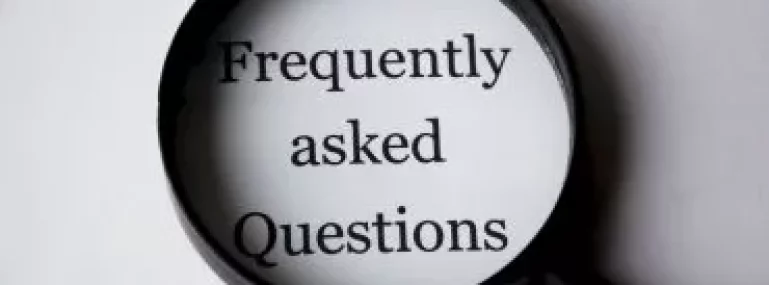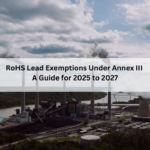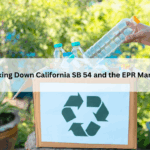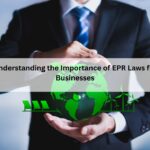-
What is RoHS Compliance?
RoHS (Restriction of Hazardous Substances) is a product-level compliance standard based on the EU Directive 2002/95/EC. It limits hazardous materials in electrical and electronic equipment to ensure environmental and human safety.
-
What are the restricted materials mandated under RoHS?
RoHS restricts the following hazardous materials in electrical and electronic products: lead (<1000 ppm), mercury (<100 ppm), cadmium (<100 ppm), hexavalent chromium (<1000 ppm), polybrominated biphenyls (PBB) (<1000 ppm), and polybrominated diphenyl ethers (PBDE) (<1000 ppm), with some limited exemptions.
-
Why is RoHS compliance important?
Hazardous materials that are restricted in RoHS are harmful to environment, humans and animals.
-
Why were RoHS regulations created?
To reduce the usage of hazardous chemicals and thus reduce its effect on environment, humans and animals.
-
How are products tested for RoHS compliance?
RoHS compliance is tested with the help of RoHS analyzers. They are also known as X-ray fluorescence or XRF metal analyzers and are used for screening and verification of the restricted metals.
-
Is RoHS compliance mandatory throughout the world?
No, it is not mandatory throughout the world. It is good if you follow RoHS, because following Europe, most of the countries are now bringing up their own RoHS.
-
Which companies are affected by the RoHS Directive?
Any companies that sells electronic products, sub-assemblies or components directly to EU countries, or sells to resellers, distributors or integrators that in turn sell products to EU countries, is impacted by chemicals banned in RoHS directive Metal industry is also affected, if there are any applications of metal plating, anodizing, chromating or other finishes on EEE components, heat sinks, or connectors.
-
How do I know whether my products are RoHS compliant?
RoHS compliance is measured by careful testing and documentation in accordance with RoHS Directive regulations. RoHS consultants help to oversee compliance. Companies can send their products to laboratories for conducting RoHS tests. The labs will test the company’s products and will return the results that will be needed for documentation. Another option is the use of handheld XRF analyzers, small devices instantly test for the presence of elements and substances controlled by the RoHS Directive It will offer instant results as well as saved results for RoHS documentation.
-
How can I obtain a RoHS certification letter?
RoHS certificate is a self-declaration letter. You can declare the compliance after checking for RoHS chemicals. The following steps are to be followed for RoHS certification. a. Testing: Through XRF testing and/or lab phthalate solvent extraction testing to be done to determine values of the ten restricted RoHS substances. b. Process Audit: Inspect all applicable manufacturing processes used towards RoHS compliance on-site. c. Documentation Review: Review the Bill of Materials, assembly drawings, materials declarations, test reports, and conformance/compliance certificates from all suppliers. d. Certification Statement: After a successful audit, a RoHS Certificate of Compliance (also known as a Certificate of Conformity or Declaration of Conformity) can be issued.
-
What is the impact of RoHS non-compliance?
Companies will not prefer to buy RoHS non-compliance products. Refusing to comply with requests or non-compliant products can result in fines that are £5000 or more. In some cases, businesses can be banned from export of their products. Specific penalties vary from state to state, but non-compliance is always far costlier for a business than compliance.
-
What is RoHS 2 and how does differ from the original RoHS?
RoHS 2 is called Directive 2011/65/EU The scope of original RoHS is expanded to cover all electrical/electronic equipment, cables, and spare parts with compliance required by July 22, 2019 or sooner depending on product category. Directive 2011/65/EU was published in 2011 by the EU, is known as RoHS-Recast or RoHS 2. RoHS 2 includes a CE-marking directive, with CE-marking of products, RoHS compliance is also required. RoHS 2 also added Categories 8 and 9 and has additional compliance recordkeeping requirements.
-
What is RoHS 3 and how does it differ from RoHS 2?
RoHS 3, or Directive 2015/863, adds four additional restricted substances (phthalates) to the original list of six.
-
What is RoHS 5/6?
RoHS 5/6 refers to compliance for 5 out of the 6 restricted substances (no compliance for lead (Pb)).
-
Will there be a “RoHS 4”? / Are there additional substances that will be restricted in the future?
Mostly yes. There are discussions (called RoHS Pack 15) taking place for the possible amendment and inclusion of seven new substances. The seven additional substances being assessed are: Beryllium, Cobalt (dichloride and sulphate), Diantimony trioxide, Indium phosphide, Medium-Chain Chlorinated Paraffins (MCCPs), Nickel (sulphate and sulfamate), and Tetrabromobisphenol A (TBBP-A).
-
How are RoHS and REACH related?
RoHS restricts substances present in electrical/electronic equipment (wiring, components, circuit boards, displays, sub-assemblies, cabling). REACH controls all chemicals that might be used to manufacture the product. All the RoHS restricted substances are also on the REACH restricted list.
-
How are RoHS and WEEE related?
RoHS regulates the hazardous substances used in the manufacture of electrical and electronic equipment (EEE), while WEEE regulates the disposal of this same equipment. WEEE compliance aims to encourage the design of electronic products with environmentally-safe recycling and recovery. RoHS compliance joins with WEEE by reducing the amount of hazardous chemicals used in electronics manufacture.
-
How is RoHS compliance enforced and what are the penalties?
By national enforcement bodies such as the NMO (National Measurements Office). Penalties and fines for non-compliance can vary between EU countries but include fines or products going to be banned in countries and also imprisonment in some member states.
-
Is my business affected by RoHS?
Yes, if you use any EEE component in your product.
-
What is EU RoHS Directive 2011/65/EU?
EU Directive 2011/65/EU (Restriction of the Use of Certain Hazardous Substances in Electronic and Electrical Equipment) restricts the amount of hazardous substances that can be used in the manufacture of electrical and electronic equipment (EEE). These hazardous substances can be difficult to manage at the end period of the product life cycle. Therefore, the regulations focus on restricting them at the beginning of the cycle in order to control or eliminate the waste at last.
-
What are the substances banned by the RoHS recast directive and their maximum concentration values (MCV)?
The RoHS Recast Directive has not changed the restricted substances and maximum concentration values from the original 2002 Directive: lead (0.1%), mercury (0.1%), hexavalent chromium (0.1%), cadmium (0.01%), and the two flame retardants PBB (0.1%) and PBDE (0.1%).
-
What is European Commission Delegated Directive (EU) 2015/863?
The European Commission Delegated Directive (EU) 2015/863, also known as the RoHS 2 amendment, updated the original RoHS directive by adding four additional restricted substances—phthalates. These include Bis(2-Ethylhexyl) phthalate (DEHP), Benzyl butyl phthalate (BBP), Dibutyl phthalate (DBP), and Diisobutyl phthalate (DIBP), each with a maximum allowable concentration of 0.1% (1000 ppm) in electrical and electronic equipment.
-
What are the substances banned by RoHS Commission Delegated Directive (EU) 2015/863 and their maximum concentration values (MCV)?
Bis(2-Ethylhexyl) phthalate (DEHP):
< 1000 ppm, Benzyl butyl phthalate (BBP): < 1000 ppm, Dibutyl phthalate (DBP): < 1000 ppm, Diisobutyl phthalate (DIBP): < 1000 ppm
- ABOUT US
- Executive Team
Meet Our Executive Team Leading the Way Leadership Insight
- Partner With Us
Streamline collaboration and success
Explore opportunities
- News
Keep up-to-date with the latest company newsGet the latest updates
- COMPLIANCE SOLUTIONS
Managed Compliance
Integrated way to address the risks of compliance
Training & Support
Provide your team with an armoury of compliance knowledge
Compliance Reporting
On-demand reports generation helps you track update easily
Compliance Consulting
Gap analysis and compliance strategy development
PPAP AND FAI Support
Turnkey PPAP support services that enable high quality manufacturing
Procurement Services
Procurement services that enable ethical sourcing & compliance
Compliance Documentation
Material declarations, certifications for standard / custom parts
Component Engineering
Building reliable component databases, that enable design for a green future
- EXPERTISE
Product Compliance
Expert Consulting, Fully Managed Compliance Solutions, Training, Compliance Services
Ethical Sourcing
Consulting, Training, Managed Compliance Solutions including Software and Services
ESG
Consulting, Frameworks, Managed Compliance Solutions including Software and Services
Trade Compliance
Consulting and Managed Services to meet various trade regulations
- RESOURCES
- Blog
Learn about material compliance, ethical sourcing, and sustainable supply chains Get Insights
- Case Studies
Unveiling Success Stories with ComplianceXL
Inspire your vision with real examples
- CONTACT US





